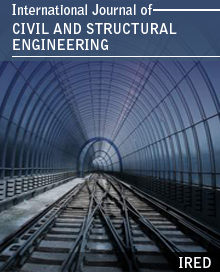The improvement of Asphalt materials by adding Nano silica
Author(s) : ABDULLAH ABOU KHADRAH, MARWA SABRY, MOHAMED ELSHRIEF
 Abstract
Abstract
Nanotechnology has been gradually penetrated into the field of asphalt modification. Seemingly magic effects of nanomaterial have been brought to improve the performance of asphalt. To demonstrate many of the prospective applications, researchers have conducted a series of positive and effective efforts dealing with the preparation of modified asphalt to demonstrate the mechanism of modification and the resultant improvement in performance. In this review, various nanomaterial used in asphalt modification are initially presented, followed by the methods employed to modify the asphalt with these materials and finally the effects of nanomaterial on the performance of base asphalt are presented and the modification mechanisms are discussed. Based on the current research results, the influence of preparation process parameters on the compatibility of every phase in the modified asphalt and the stability of the modified asphalt system are described. Finally, the development trend of the topic field is projected. In this study the experimental testing of Nano silica with three percentages 2%, 4%, and 6% by the weight of asphalt were blended in asphalt binder at high temperature to exfoliate the Nano silica within the asphalt. The asphalt binder was then characterized using the AASHTO viscosity, penetration test, softening point, flash point and Marshall Test. These types of additives of Nano-silica is increasing the viscosity at2% , 4% and 6% ,increase the penetration by increasing the percent of Nano silica, increasing the softening point by percent of Nano silica, but flash point not affected. In Marshall Test when adding 2% of Nano silica by the weight of asphalt Marshall Stabilization increased; but adding 4% the value of stabilization is smaller than it at 2% but not reached to the original sample stabilization. Adding 6% of these additives increased Marshall Stabilization again which represented with frequent line.

About Journals
- ISSN No. : 2372-3971
- Editor Chief : Dr. Cristina Gentilini, Alma mater Studiorum - University of Bologna, Italy
- Related Subjects : Corrosion Of Reinforcement In HVFA Concrete, Advanced Construction Materials : Microsilica In Concrete, Oceans as a Non-conventional Source of Energy, Silica Fume Concrete
 Full Paper PDF
Full Paper PDF